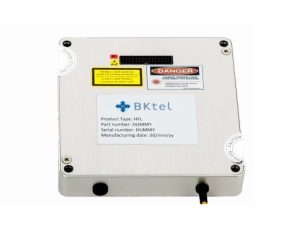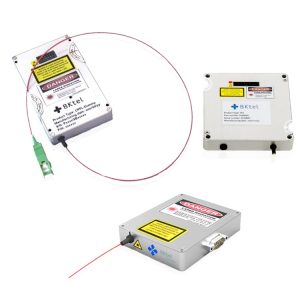Additional Resources
Whitepapers:
Blogs:
Videos:
1030-1100nm Lasers emit laser light in the near-infrared (NIR) regime. On this page you will find Telcordia-grade ytterbium-doped Fiber Lasers and Fiber Amplifiers.
These NIR, ytterbium-doped Fiber Lasers can have a factory-set wavelength from 1030nm to 1100nm. They provide high peak powers up to 25kW in a compact package with low power consumption. The Fiber Lasers on this page are perfect for an array of applications including Distance Measurement, Airborne LIDAR, 3D Scanning, and various Test & Measurement applications.
T
| Picture | Part Number | Type | Wavelength (nm) | pa_output-power | pa_mode | pa_output | pa_linewidth | pa_pulse-energy | pa_pulse-width | pa_rep-rate |
|---|---|---|---|---|---|---|---|---|---|---|

|
BK-FL-Pulsed | "Eye Safe", Pulsed Fiber Lasers, Low SWaP, Ruggedized, High Peak Power, Customizable | 1030-1100, 1540-1560 |

The FL-P series of pulsed fiber lasers, manufactured to Telcordia standards, is designed for diverse applications with average powers up to 5W at 1μm and 1.5μm, peak powers reaching 25kW, and pulse widths from 400ps to 50ns. Available in both OEM and Turnkey formats, this series delivers flexibility with a wide range of configurations, including pulse monitoring, internal/external triggering, TTL or LVDS input signals, and extended operating temperature options. Its robust, compact design makes it ideal for systems where space and reliability are critical, providing high-quality, customizable laser solutions for the most demanding environments.